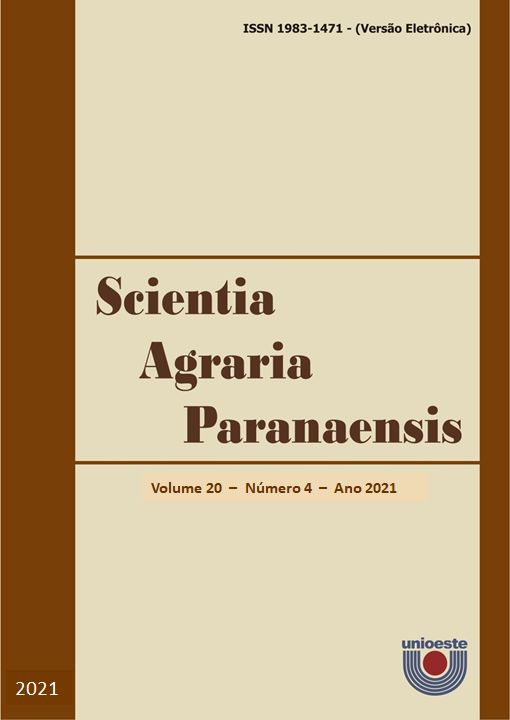Soil resistance to penetration in integrated crop-livestock with grazing intensities and fertilization
DOI:
https://doi.org/10.18188/sap.v20i4.28190Resumo
Soil compaction periodic monitoring through soil penetration resistance (PR) has been a rapid, easy, and economic way to evaluate the different management systems on soil physical attributes effect. The aim was to evaluate the grazing intensities and nitrogen fertilization effect in two winter/summer seasons (black oat/corn/black oat/soybean) on soil PR in an integrated crop-livestock system. The experimental design was in randomized blocks, in a factorial 2×3 [2 black oat pasture residual heights (15 and 7 cm), under rotational grazing × 3 nitrogen rates applied to pasture (0, 75 and 150 kg N ha-1)], with 4 repetitions. Soil PR was measured using an electronic penetrograph to an 80 cm depth. Soil samples were collected to determine gravimetric moisture. In the first year, 75 kg N ha-1 resulted in the highest depth compaction while intensive grazing (7 cm) resulted in the highest PR. In the second year, plots without N resulted in lower PR levels, mainly in the superficial layers. However, the rate of 150 kg N ha-1 presented greater compaction in the 15-20 cm layer after grazing. The high moisture levels in depth reduced PR in all evaluated periods, highlighting the close relationship between both variables. General grazing heights did not affect PR, but the use of systems that increase residues production, as moderate grazing and nitrogen fertilization might be an alternative to mitigate the soil compaction in surface layers effects.
Downloads
Publicado
Como Citar
Edição
Seção
Licença
Aviso de Direito Autoral Creative Commons
Política para Periódicos de Acesso Livre
Autores que publicam nesta revista concordam com os seguintes termos:
1. Autores mantém os direitos autorais e concedem à revista o direito de primeira publicação, com o trabalho simultaneamente licenciado sob a Licença Creative Commons Attribution que permite o compartilhamento do trabalho com reconhecimento da autoria e publicação inicial nesta revista.2. Autores têm autorização para assumir contratos adicionais separadamente, para distribuição não-exclusiva da versão do trabalho publicada nesta revista (ex.: publicar em repositório institucional ou como capítulo de livro), com reconhecimento de autoria e publicação inicial nesta revista.
3. Autores têm permissão e são estimulados a publicar e distribuir seu trabalho online (ex.: em repositórios institucionais ou na sua página pessoal) a qualquer ponto antes ou durante o processo editorial, já que isso pode gerar alterações produtivas, bem como aumentar o impacto e a citação do trabalho publicado (Veja O Efeito do Acesso Livre).
Licença Creative Commons
Esta obra está licenciada com uma Licença Creative Commons Atribuição-NãoComercial-CompartilhaIgual 4.0 Internacional, o que permite compartilhar, copiar, distribuir, exibir, reproduzir, a totalidade ou partes desde que não tenha objetivo comercial e sejam citados os autores e a fonte.


